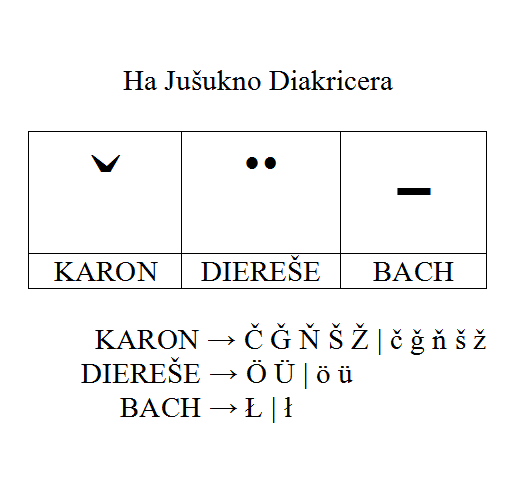Jušuk Diacritics
Let's see by now how the diacritics modify themselves into their doubled forms (if any), and how each form is related to its diacritics.
Spelling | Spelling | |||
|---|---|---|---|---|
| c (1) | ts | cc / tts | Horvacia (Horvatsia) "Croatia" | ALT+67 (C) ALT+99 (c) |
| č | tsz / csz | tssz / cssz | čusuda (tszusuda) "choose" | ALT+268 (Č) ALT+269 (č) |
| ǧ (2) | gy / dzs | ggy / ddzs | haǧia (hagyia) "distinction" | ALT+486 (Ǧ) ALT+487 (ǧ) |
| ň | ny | — | baňka (banyka) "bubble" | ALT+327 (Ň) ALT+328 (ň) |
| š | sz | ssz | tošal (toszal) "yearly" | ALT+352 (Š) ALT+353 (š) |
| ž | zs | zzs | abenžu (abenzsu) "vengeance" | ALT+381 (Ž) ALT+382 (ž) |
The following consonants can get simply doubled: b, d, f, g, k, l, m, n, p, r, t, v and z. By its own, the doubled form of h is ch.
ałrebessz "aurebesh"
akkordu "consensus"
alla "bird"
brumma "witch; fairy"
reddere "responsibility"
suffel "souffle"
taggetu "target"
Well, that's all for now (:
_____________________________________________________
¹ i.e., diacritical in the phonetical sense.
² a breve may be placed instead of the caron, i.e., may be Ğ (ALT+286) and ğ (ALT+287)


Comentários
Postar um comentário